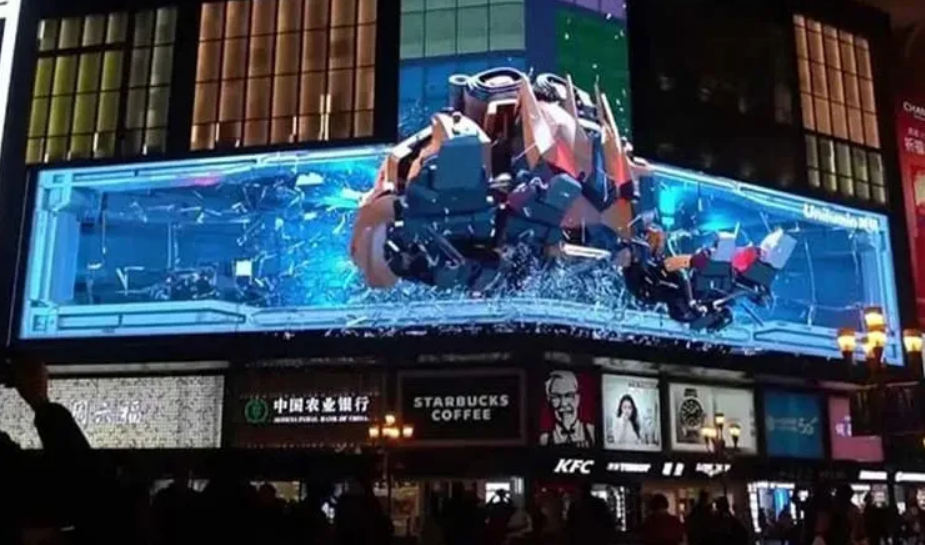
Introduction to Naked Eye 3D LED Displays
Naked Eye 3D LED Display represent an innovative advancement in visual technology, allowing viewers to experience 3D effects without the need for special glasses. By leveraging the power of LED technology, these displays create stunning, lifelike images that appear to float in mid-air, offering a unique and immersive visual experience. This technology is revolutionizing the way we interact with digital content, especially inadvertising, entertainment, and public installations.

1. Introduction to Naked Eye 3D LED Displays
This has led to increased adoption in fields such as advertising, entertainment, and public information systems.

The technology has gained popularity due to its ability to capture the attention of viewers in a more engaging way than traditional 2D displays. Whether in shopping malls, exhibitions, or events, the immersive nature of naked eye 3D displays makes them a compelling choice for both marketers and content creators.
2. How Naked Eye 3D Technology Works
Naked eye 3D technology works by manipulating light and visual cues to simulate depth.

These displays create multiple images from different angles, which are then processed to present a coherent 3D image to the viewer from a specific vantage point. When viewed from the right angle, the images appear to have depth, giving the illusion of a 3D object that seems to float in space.
3. The Role of LED Technology in Enhancing 3D Effects

LED technology plays a pivotal role in bringing naked eye 3D displays to life. LEDs are known for their brightness, color accuracy, and energy efficiency, making them an ideal choice for high-quality 3D displays
4. Applications of Naked Eye 3D LED Displays
Naked eye 3D LED displays have found widespread application across various industries, thanks to their ability to capture attention and create an engaging experience. Some common uses include:

- Advertising and Marketing: Businesses use naked eye 3D LED displays to create eye-catching ads that stand out in crowded environments.
- Entertainment and Events: At concerts, trade shows, and exhibitions, naked eye 3D displays offer a new way to engage audiences with stunning visuals.
- Public Information Systems: Cities and public spaces use naked eye 3D LED displays for everything from traffic updates to public service announcements. Their high visibility and ability to convey complex information make them valuable tools in urban environments.
5. Benefits of Naked Eye 3D LED Displays
The advantages of naked eye 3D LED displays are numerous and include:

- This makes the technology more accessible and convenient for all audiences.
- High-Quality Visuals: LED displays offer excellent brightness, contrast, and color accuracy, ensuring that the 3D effects are vibrant and lifelike.
6. Challenges and Limitations of Naked Eye 3D LED Displays
Despite their many advantages, naked eye 3D LED displays also come with some challenges:

- Viewing Angle and Distance: One of the main limitations of naked eye 3D displays is that the 3D effect is best viewed from a specific angle and distance. Outside of this “sweet spot,” the 3D illusion may not be as effective.
- Cost and Installation: Naked eye 3D technology can be more expensive to implement compared to traditional 2D displays. The cost of the hardware and the complexity of installation can be barriers for some businesses.
- It requires specialized skills and software to create the 3D visuals that are optimized for these displays.
7. The Future of Naked Eye 3D LED Displays

The future of naked eye 3D LED displays looks promising as the technology continues to evolve. With advancements in processing power, display resolution, and content creation tools, the 3D effects will become even more realistic and immersive.
In the coming years, we may see wider adoption across various sectors, from entertainment to retail.
8. Conclusion
Naked eye 3D LED displays represent a significant leap forward in visual technology, offering an immersive, glasses-free 3D experience that is capturing the attention of businesses and consumers alike. While there are challenges related to cost, installation, and content creation, the potential benefits—such as increased viewer engagement, high-quality visuals, and versatility—make these displays a compelling option for a variety of applications. As the technology continues to improve, it is likely to play an even more significant role in shaping the future of advertising, entertainment, and public communications.